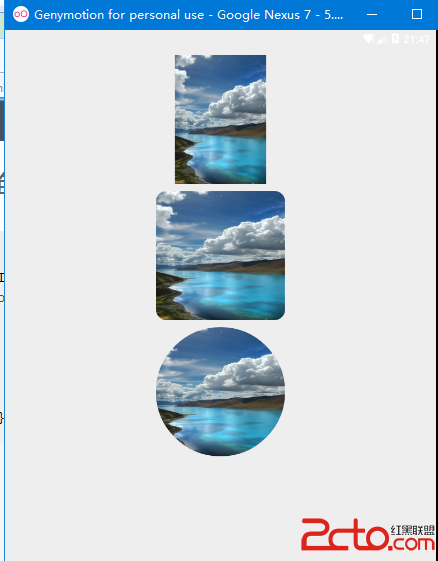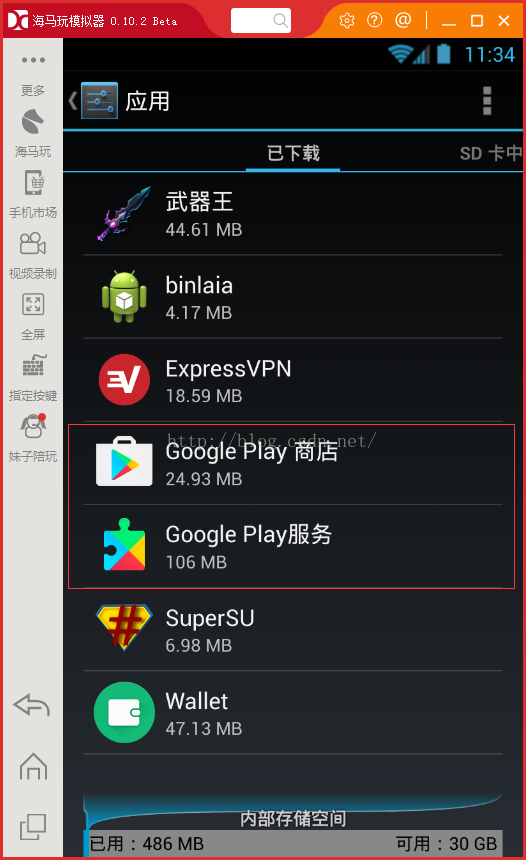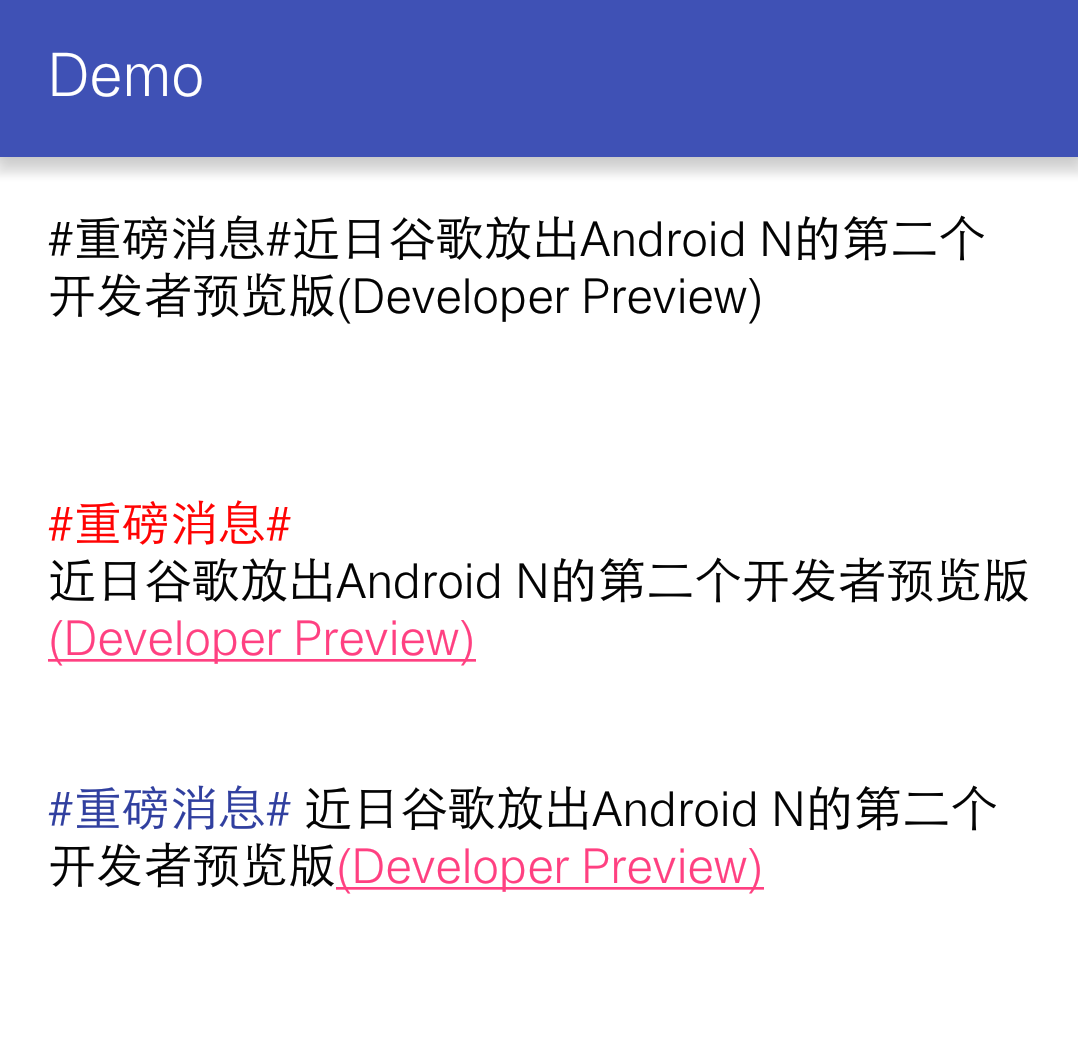編輯:關於Android編程
Linux通常使用Framebuffer來用作顯示輸出,Framebuffer就是一塊內存區域,它通常是顯示驅動的內部緩沖區在內存中的映射。一旦用戶進程把圖像數據復制到Framebuffer中,顯示驅動會一個像素一個像素地掃描整個Framebuffer,並根據其中的值更新屏幕上像素點的顏色。驅動中這種更新屏幕的動作是固定的,它的周期就是我們常說的刷新率。
但是在屏幕更新一半時,用戶進程更新了Framebuffer中的數據,將導致屏幕上畫面的上半部分是前一幀的畫面,下半部分變成了新的畫面。當然錯誤會在下次刷新時糾正過來,但是這樣也會有閃爍的感覺。這個可以使用雙緩沖機制,雙緩沖就是提供兩塊Framebuffer,一塊用於顯示,一塊用於數據更新。數據准備好後,通過ioctl操作告訴顯示設備切換用於顯示的FrameBuffer,這樣圖像就能快速的顯示出來。
但是雙緩沖並沒有完全解決問題,雖然雙緩沖切換的速度很快,但是如果切換的時間點不對,在畫面更新一半的時候切換,還是會出現閃爍的問題。當然,我們可以在底層進行控制,收到切換請求的時候,內部並不馬上執行,等到刷新完成後再切換,這樣完全避免了畫面重疊問題。但是這樣也有問題,如果用ioctl操作告訴底層可以進行切換了,但是緩沖區沒有切換,這樣應用層就不能確定何時可以再使用緩沖區,因此只能不斷的通過ioctl來查詢緩沖區的狀態,一直到切換完成了。這種方式效率太低,拖慢了整個系統。解決這個問題就是底層固定發送信號給用戶進程,通知進程切換的時機。這個信號就是VSync信號。
VSync信號是一個硬件信號,一般是顯示設備刷新的周期到了會發送。
Android通過VSync機制來提高顯示效果,那麼VSync是如何產生的?通常這個信號是由顯示驅動產生,這樣才能達到最佳效果。但是Android為了能運行在不支持VSync機制的設備上,也提供了軟件模擬產生VSync信號的手段。
SurfaceFlinger中用HWComposer類來表示硬件顯示設備,
HWComposer::HWComposer(
const sp& flinger,
EventHandler& handler)
: mFlinger(flinger),
mFbDev(0), mHwc(0), mNumDisplays(1),
mCBContext(new cb_context),
mEventHandler(handler),
mDebugForceFakeVSync(false)
{
......
bool needVSyncThread = true;
// Note: some devices may insist that the FB HAL be opened before HWC.
int fberr = loadFbHalModule();//裝載FrameBuffer的硬件模塊
loadHwcModule();//裝載HWComposer的硬件模塊,這個函數中會將mHwc置為true
......
if (mHwc) {//這個為true代表硬件設備打開了
ALOGI("Using %s version %u.%u", HWC_HARDWARE_COMPOSER,
(hwcApiVersion(mHwc) >> 24) & 0xff,
(hwcApiVersion(mHwc) >> 16) & 0xff);
if (mHwc->registerProcs) {
mCBContext->hwc = this;
mCBContext->procs.invalidate = &hook_invalidate;
mCBContext->procs.vsync = &hook_vsync;//vsync回調函數
if (hwcHasApiVersion(mHwc, HWC_DEVICE_API_VERSION_1_1))
mCBContext->procs.hotplug = &hook_hotplug;
else
mCBContext->procs.hotplug = NULL;
memset(mCBContext->procs.zero, 0, sizeof(mCBContext->procs.zero));
mHwc->registerProcs(mHwc, &mCBContext->procs);
}
// don't need a vsync thread if we have a hardware composer
needVSyncThread = false;//打開硬件設備成功了,將needVSncThread為false
......
}
......
if (needVSyncThread) {
// we don't have VSYNC support, we need to fake it
mVSyncThread = new VSyncThread(*this);
}
}
通過loadHwcModule來裝載硬件模塊,如果成功,mHwc為true,needVSyncThread為false。如果不成功,needVsyncThread為true,然後就要創建VSyncThread對象了,它就是產生VSync信號的軟件手段了。
VSyncThread是一個thread,在onFirstRef中會調用run函數,就是執行threadLoop,這個函數只要返回true就會一直執行。
bool HWComposer::VSyncThread::threadLoop() {
{ // scope for lock
Mutex::Autolock _l(mLock);
while (!mEnabled) {
mCondition.wait(mLock);
}
}
const nsecs_t period = mRefreshPeriod;
const nsecs_t now = systemTime(CLOCK_MONOTONIC);
nsecs_t next_vsync = mNextFakeVSync;
nsecs_t sleep = next_vsync - now;
if (sleep < 0) {
// we missed, find where the next vsync should be
sleep = (period - ((now - next_vsync) % period));
next_vsync = now + sleep;
}
mNextFakeVSync = next_vsync + period;
struct timespec spec;
spec.tv_sec = next_vsync / 1000000000;
spec.tv_nsec = next_vsync % 1000000000;
int err;
do {
err = clock_nanosleep(CLOCK_MONOTONIC, TIMER_ABSTIME, &spec, NULL);
} while (err<0 && errno == EINTR);
if (err == 0) {
mHwc.mEventHandler.onVSyncReceived(0, next_vsync);
}
return true;
}
這個函數會間隔模擬產生VSync的信號的原理是在固定時間發送消息給HWCompoer的消息對象mEventHandler,這個其實就到SurfaceFlinger的onVSyncReceived函數了。用軟件模擬VSync信號在系統比較忙的時候可能會丟失一些信號。
Android源碼再hardware/lib/libhardware/modules下有一個hwcomposer目錄,裡面是一個Android提供的缺省的硬件HWComposer模塊的例子,這個例子只實現了一個open接口,並不能真正工作。在前面HWComposer的構造函數中,有如下代碼
mCBContext->procs.vsync = &hook_vsync;
這裡指定了vsync的回調函數是hook_vsync,如果硬件中產生了VSync信號,將通過這個函數來通知上層,看看它的代碼:
void HWComposer::hook_vsync(const struct hwc_procs* procs, int disp,
int64_t timestamp) {
cb_context* ctx = reinterpret_cast(
const_cast(procs));
ctx->hwc->vsync(disp, timestamp);
}
然後又調用了vsync函數,這個函數最後也是調用了mEventHandler.onVSyncReceived函數,這個函數最後回到SurfaceFlinger中的onVsyncReceived函數中。
void HWComposer::vsync(int disp, int64_t timestamp) {
if (uint32_t(disp) < HWC_NUM_PHYSICAL_DISPLAY_TYPES) {
{
Mutex::Autolock _l(mLock);
// There have been reports of HWCs that signal several vsync events
// with the same timestamp when turning the display off and on. This
// is a bug in the HWC implementation, but filter the extra events
// out here so they don't cause havoc downstream.
if (timestamp == mLastHwVSync[disp]) {
ALOGW("Ignoring duplicate VSYNC event from HWC (t=%" PRId64 ")",
timestamp);
return;
}
mLastHwVSync[disp] = timestamp;
}
char tag[16];
snprintf(tag, sizeof(tag), "HW_VSYNC_%1u", disp);
ATRACE_INT(tag, ++mVSyncCounts[disp] & 1);
mEventHandler.onVSyncReceived(disp, timestamp);
}
}
我們先來看下loadFbHalModule函數,hw_get_module是HAl框架中裝載HAL模塊的函數
int HWComposer::loadFbHalModule()
{
hw_module_t const* module;
int err = hw_get_module(GRALLOC_HARDWARE_MODULE_ID, &module);
if (err != 0) {
ALOGE("%s module not found", GRALLOC_HARDWARE_MODULE_ID);
return err;
}
return framebuffer_open(module, &mFbDev);
}
我們再來看看framebuffer_open函數,
static inline int framebuffer_open(const struct hw_module_t* module,
struct framebuffer_device_t** device) {
return module->methods->open(module,
GRALLOC_HARDWARE_FB0, (struct hw_device_t**)device);
}
GRALLOC_HARDWARE_FB0 就是fb0
#define GRALLOC_HARDWARE_FB0 "fb0"
Gralloc模塊在實際設備中有硬件廠商提供。我們來看下這個open函數
static int gralloc_device_open(const hw_module_t* module, const char* name, hw_device_t** device)
{
int status = -EINVAL;
if (!strncmp(name, GRALLOC_HARDWARE_GPU0, MALI_GRALLOC_HARDWARE_MAX_STR_LEN))
{
status = alloc_device_open(module, name, device);//處理gpu的
}
else if (!strncmp(name, GRALLOC_HARDWARE_FB0, MALI_GRALLOC_HARDWARE_MAX_STR_LEN))
{
status = framebuffer_device_open(module, name, device);
}
return status;
}
我們來看framebuffer_device_open函數,如果不支持framebuffer直接退出了(現在很多設備都開始不支持了)。如果支持framebuffer的話先是調用了init_frame_buffer函數來獲取設備信息,通過mmap分配一塊共享內存,然後設置FrameBuffer的操作函數等。
int framebuffer_device_open(hw_module_t const* module, const char* name, hw_device_t** device)
{
int status = -EINVAL;
log_fbpost = false;
char property[PROPERTY_VALUE_MAX];
if(property_get("debug.gralloc.fbpost", property, "0") > 0) {
if(atoi(property) == 1) {
log_fbpost = true;
ALOGI("enable fbpost log!");
}
}
alloc_device_t* gralloc_device;
#if DISABLE_FRAMEBUFFER_HAL == 1 //不支持FrameBuffer
AERR("Framebuffer HAL not support/disabled %s",
#ifdef MALI_DISPLAY_VERSION
"with MALI display enable");
#else
"");
#endif
return -ENODEV;
#endif
status = gralloc_open(module, &gralloc_device);
if (status < 0)
{
return status;
}
private_module_t* m = (private_module_t*)module;
status = init_frame_buffer(m);
framebuffer_device_t *dev = reinterpret_cast<framebuffer_device_t*> (malloc(sizeof(framebuffer_device_t)));
/* if either or both of init_frame_buffer() and malloc failed */
if ((status < 0) || (!dev))
{
gralloc_close(gralloc_device);
(!dev) ? (void)(status = -ENOMEM) : free(dev);
return status;
}
memset(dev, 0, sizeof(*dev));
//設置framebuffer的操作函數
dev->common.tag = HARDWARE_DEVICE_TAG;
dev->common.version = 0;
dev->common.module = const_cast(module);
dev->common.close = fb_close;
dev->setSwapInterval = fb_set_swap_interval;
dev->post = fb_post;
dev->enableScreen = fb_enable_screen;
dev->setUpdateRect = 0;
dev->compositionComplete = &compositionComplete;
int stride = m->finfo.line_length / (m->info.bits_per_pixel >> 3);
const_cast(dev->flags) = 0;
const_cast(dev->width) = m->info.xres;
const_cast(dev->height) = m->info.yres;
const_cast(dev->stride) = stride;
const_cast(dev->format) = m->fbFormat;
const_cast(dev->xdpi) = m->xdpi;
const_cast(dev->ydpi) = m->ydpi;
const_cast(dev->fps) = m->fps;
const_cast(dev->minSwapInterval) = 0;
const_cast(dev->maxSwapInterval) = 1;
const_cast(dev->numFramebuffers) = m->numBuffers;
*device = &dev->common;
AINF("%s line %d format %d numBuffers %d",__FUNCTION__,__LINE__, dev->format, m->numBuffers);
//init dynamic lcd fps adjustment
dyn_fps_init(m);
#if GRALLOC_VSYNC_NEEDED == 1
gralloc_vsync_enable(dev);//支持vsync
#endif
gralloc_close(gralloc_device);
return status;
} </framebuffer_device_t*>
init_frame_buffer函數主要調用了init_frame_buffer_locked函數
static int init_frame_buffer(struct private_module_t* module)
{
pthread_mutex_lock(&module->lock);
int err = init_frame_buffer_locked(module);
pthread_mutex_unlock(&module->lock);
return err;
}
我們來看看init_frame_buffer_locked函數,先打開設備列表中的一個設備即可,然後通過ioctl獲取設備信息,把設備信息放到module中,後面通過mmap分配一塊共享內存。
int init_frame_buffer_locked(struct private_module_t* module)
{
if (module->framebuffer)
{
return 0; // Nothing to do, already initialized
}
char const * const device_template[] =//設備列表
{
"/dev/graphics/fb%u",
"/dev/fb%u",
NULL
};
int fd = -1;
int i = 0;
char name[64];
while ((fd == -1) && device_template[i])//只要打開一個設備就好了
{
snprintf(name, 64, device_template[i], 0);
fd = open(name, O_RDWR, 0);
i++;
}
if (fd < 0)
{
return -errno;
}
struct fb_fix_screeninfo finfo;
if (ioctl(fd, FBIOGET_FSCREENINFO, &finfo) == -1)
{
return -errno;
}
struct fb_var_screeninfo info;
if (ioctl(fd, FBIOGET_VSCREENINFO, &info) == -1)
{
return -errno;
}
info.reserved[0] = 0;
info.reserved[1] = 0;
info.reserved[2] = 0;
info.xoffset = 0;
info.yoffset = 0;
info.activate = FB_ACTIVATE_NOW;
if(info.bits_per_pixel == 32)
{
/*
* Explicitly request 8/8/8
*/
info.bits_per_pixel = 32;
info.red.offset = 16;
info.red.length = 8;
info.green.offset = 8;
info.green.length = 8;
info.blue.offset = 0;
info.blue.length = 8;
info.transp.offset = 24;
info.transp.length = 8;
}
else
{
/*
* Explicitly request 5/6/5
*/
info.bits_per_pixel = 16;
info.red.offset = 11;
info.red.length = 5;
info.green.offset = 5;
info.green.length = 6;
info.blue.offset = 0;
info.blue.length = 5;
info.transp.offset = 0;
info.transp.length = 0;
}
/*
* Request NUM_BUFFERS screens (at lest 2 for page flipping)
*/
info.yres_virtual = info.yres * NUM_BUFFERS;
uint32_t flags = PAGE_FLIP;
if (ioctl(fd, FBIOPUT_VSCREENINFO, &info) == -1)
{
info.yres_virtual = info.yres;
flags &= ~PAGE_FLIP;
AWAR( "FBIOPUT_VSCREENINFO failed, page flipping not supported fd: %d", fd );
}
if (info.yres_virtual < info.yres * 2)
{
// we need at least 2 for page-flipping
info.yres_virtual = info.yres;
flags &= ~PAGE_FLIP;
AWAR( "page flipping not supported (yres_virtual=%d, requested=%d)", info.yres_virtual, info.yres*2 );
}
if (ioctl(fd, FBIOGET_VSCREENINFO, &info) == -1)
{
return -errno;
}
int refreshRate = 0;
if ( info.pixclock > 0 )
{
refreshRate = 1000000000000000LLU /
(
uint64_t( info.upper_margin + info.lower_margin + info.yres + info.hsync_len )
* ( info.left_margin + info.right_margin + info.xres + info.vsync_len )
* info.pixclock
);
}
else
{
AWAR( "fbdev pixclock is zero for fd: %d", fd );
}
if (refreshRate == 0)
{
refreshRate = 60*1000; // 60 Hz
}
if (int(info.width) <= 0 || int(info.height) <= 0)
{
// the driver doesn't return that information
// default to 320 dpi
// debugging stuff...
char value[PROPERTY_VALUE_MAX];
int lcd_density;
property_get("ro.sf.lcd_density", value, "320");
lcd_density = atoi(value);
info.width = ((info.xres * 25.4f) / (float)lcd_density + 0.5f);
info.height = ((info.yres * 25.4f) / (float)lcd_density + 0.5f);
}
float xdpi = (info.xres * 25.4f) / info.width;
float ydpi = (info.yres * 25.4f) / info.height;
float fps = refreshRate / 1000.0f;
AINF("leadcore fb using (fd=%d)\n"
"id = %s\n"
"xres = %d px\n"
"yres = %d px\n"
"xres_virtual = %d px\n"
"yres_virtual = %d px\n"
"bpp = %d\n"
"r = %2u:%u\n"
"g = %2u:%u\n"
"b = %2u:%u\n",
fd,
finfo.id,
info.xres,
info.yres,
info.xres_virtual,
info.yres_virtual,
info.bits_per_pixel,
info.red.offset, info.red.length,
info.green.offset, info.green.length,
info.blue.offset, info.blue.length);
AINF("width = %d mm (%f dpi)\n"
"height = %d mm (%f dpi)\n"
"refresh rate = %.2f Hz\n",
info.width, xdpi,
info.height, ydpi,
fps);
if (0 == strncmp(finfo.id, "CLCD FB", 7))
{
module->dpy_type = MALI_DPY_TYPE_CLCD;
}
else if (0 == strncmp(finfo.id, "ARM Mali HDLCD", 14))
{
module->dpy_type = MALI_DPY_TYPE_HDLCD;
}
else
{
module->dpy_type = MALI_DPY_TYPE_UNKNOWN;
}
if (ioctl(fd, FBIOGET_FSCREENINFO, &finfo) == -1)
{
return -errno;
}
if (finfo.smem_len <= 0)
{
return -errno;
}
if( info.bits_per_pixel == 32 &&
info.red.offset == 16 &&
info.red.length == 8 &&
info.green.offset == 8 &&
info.green.length == 8 &&
info.blue.offset == 0 &&
info.blue.length == 8)
{
module->fbFormat = HAL_PIXEL_FORMAT_BGRA_8888;
}
if( info.bits_per_pixel == 32 &&
info.red.offset == 0 &&
info.red.length == 8 &&
info.green.offset == 8 &&
info.green.length == 8 &&
info.blue.offset == 16 &&
info.blue.length == 8)
{
module->fbFormat = HAL_PIXEL_FORMAT_RGBA_8888;
}
if( info.bits_per_pixel == 16 &&
info.red.offset == 0 &&
info.red.length == 5 &&
info.green.offset == 5 &&
info.green.length == 6 &&
info.blue.offset == 11 &&
info.blue.length == 5)
{
module->fbFormat = HAL_PIXEL_FORMAT_RGB_565;
}
module->flags = flags;//設置信息
module->info = info;
module->finfo = finfo;
module->xdpi = xdpi;
module->ydpi = ydpi;
module->fps = fps;
module->swapInterval = 1;
/*
* map the framebuffer
*/
size_t fbSize = round_up_to_page_size(finfo.line_length * info.yres_virtual);
void* vaddr = mmap(0, fbSize, PROT_READ|PROT_WRITE, MAP_SHARED, fd, 0);//mmap分配一塊共享內存
if (vaddr == MAP_FAILED)
{
AERR( "Error mapping the framebuffer (%s)", strerror(errno) );
return -errno;
}
//fix black screen between uboot logo and bootanimation
//memset(vaddr, 0, fbSize);
// Create a "fake" buffer object for the entire frame buffer memory, and store it in the module
module->framebuffer = new private_handle_t(private_handle_t::PRIV_FLAGS_FRAMEBUFFER, GRALLOC_USAGE_HW_FB, fbSize, vaddr,
0, dup(fd), 0, 0);
module->numBuffers = info.yres_virtual / info.yres;
module->bufferMask = 0;
return 0;
}
最後我們再來看看framebuffer的操作函數fb_post,這個函數根據PRIV_FLAGS_FRAMEBUFFER來判斷Framebuffer是否支持多緩沖,如果不支持方法很簡單,直接把buffer中的數據復制到Framebuffer中就可以了。
Filp是指使用ioctl的FBIOPUT_VSCREENINFO參數設置當前顯示的buffer。通過將顯示區域指向Framebuffer中的新的數據幀,能非常迅速地完成buffer的切換。單緩沖模式下數據復制到緩沖區還需要一定時間,會加重閃爍感,通過Filp的方式切換緩沖區就不存在這個問題了。
static int fb_post(struct framebuffer_device_t* dev, buffer_handle_t buffer)
{
if (private_handle_t::validate(buffer) < 0)
{
return -EINVAL;
}
private_handle_t const* hnd = reinterpret_cast(buffer);
private_module_t* m = reinterpret_cast(dev->common.module);
if (m->currentBuffer)
{
m->base.unlock(&m->base, m->currentBuffer);
m->currentBuffer = 0;
}
struct timeval tv1, tv2;
if (hnd->flags & private_handle_t::PRIV_FLAGS_FRAMEBUFFER) //framebuffer是否支持多緩沖區(flip)
{
m->base.lock(&m->base, buffer, private_module_t::PRIV_USAGE_LOCKED_FOR_POST,
0, 0, m->info.xres, m->info.yres, NULL);
const size_t offset = (uintptr_t)hnd->base - (uintptr_t)m->framebuffer->base;
int interrupt;
m->info.activate = FB_ACTIVATE_VBL;
m->info.yoffset = offset / m->finfo.line_length;
up_fps(m);
gettimeofday(&tv1, NULL);
if (ioctl(m->framebuffer->fd, FBIOPUT_VSCREENINFO, &m->info) == -1)
{
AERR( "FBIOPUT_VSCREENINFO failed for fd: %d", m->framebuffer->fd );
m->base.unlock(&m->base, buffer);
return -errno;
}
#if GRALLOC_VSYNC_NEEDED
if ( 0 != gralloc_wait_for_vsync(dev) )
{
AERR( "Gralloc wait for vsync failed for fd: %d", m->framebuffer->fd );
m->base.unlock(&m->base, buffer);
return -errno;
}
#endif
gettimeofday(&tv2, NULL);
if((int64_t)tv2.tv_sec * 1000 + tv2.tv_usec/1000 - (int64_t)tv1.tv_sec * 1000 - tv1.tv_usec/1000 > 50)
{
ALOGI("%s line %d FBIOPUT_VSCREENINFO buffer %p blocktime=%lldms now=%lldms lasttime=%lld tid=%d",__FUNCTION__,__LINE__,
buffer,
(int64_t)tv2.tv_sec * 1000 + tv2.tv_usec/1000 - (int64_t)tv1.tv_sec * 1000 - tv1.tv_usec/1000,
systemTime(CLOCK_MONOTONIC)/1000000,
(int64_t)tv2.tv_sec * 1000 + tv2.tv_usec/1000 - lasttime,
gettid());
} else {
ALOGD_IF(log_fbpost, "%s line %d FBIOPUT_VSCREENINFO buffer %p blocktime=%lldms now=%lldms lasttime=%lld tid=%d",__FUNCTION__,__LINE__,
buffer,
(int64_t)tv2.tv_sec * 1000 + tv2.tv_usec/1000 - (int64_t)tv1.tv_sec * 1000 - tv1.tv_usec/1000,
systemTime(CLOCK_MONOTONIC)/1000000,
(int64_t)tv2.tv_sec * 1000 + tv2.tv_usec/1000 - lasttime,
gettid());
}
lasttime = (int64_t)tv2.tv_sec * 1000 + tv2.tv_usec/1000;
postcount++;
if(postcount == 1000)
{
ALOGI("%s line %d avgframerate = %2f",__FUNCTION__,__LINE__,
(float)postcount*1000.0/(lasttime - timecount));
postcount = 0;
timecount = lasttime;
}
m->currentBuffer = buffer;
} else {//不支持多緩沖(flip)
void* fb_vaddr;
void* buffer_vaddr;
m->base.lock(&m->base, m->framebuffer, GRALLOC_USAGE_SW_WRITE_RARELY,
0, 0, m->info.xres, m->info.yres, &fb_vaddr);
m->base.lock(&m->base, buffer, GRALLOC_USAGE_SW_READ_RARELY,
0, 0, m->info.xres, m->info.yres, &buffer_vaddr);
// If buffer's alignment match framebuffer alignment we can do a direct copy.
// If not we must fallback to do an aligned copy of each line.
if ( hnd->byte_stride == (int)m->finfo.line_length )
{
memcpy(fb_vaddr, buffer_vaddr, m->finfo.line_length * m->info.yres);
}
else
{
uintptr_t fb_offset = 0;
uintptr_t buffer_offset = 0;
unsigned int i;
for (i = 0; i < m->info.yres; i++)
{
memcpy((void *)((uintptr_t)fb_vaddr + fb_offset),
(void *)((uintptr_t)buffer_vaddr + buffer_offset),
m->finfo.line_length);
fb_offset += m->finfo.line_length;
buffer_offset += hnd->byte_stride;
}
}
m->base.unlock(&m->base, buffer);
m->base.unlock(&m->base, m->framebuffer);
}
return 0;
}
之前的博客在GraphicBufferAllocator的alloc方法是調用了mAllocDev的alloc,而這個mAllocDev也是Gralloc模塊,最後會調用如下方法。
int gralloc_alloc(struct alloc_device_t* dev,
int w, int h, int format, int usage,
buffer_handle_t* pHandle, int* pStride)
{
int rel;
/* TODO: Redirect to specific allocator according to usage. */
if (usage & GRALLOC_USAGE_HW_FB) {
/* Dispatch to framebuffer allocator. */
rel = gralloc_alloc_framebuffer(dev,
w, h, format, usage, pHandle, pStride);
} else {
rel = gc_gralloc_alloc(dev, w, h, format, usage, pHandle, pStride);
}
return rel;
}
gralloc_alloc函數會根據usage中的標志是否有GRALLOC_USAGE_HW_FB來決定是從硬件緩沖中分配緩沖區還是從普通內存分配緩沖區。我們先看看從內存中分配緩沖區的。
如果不支持framebuffer,只能從普通內存中分配緩沖區。gc_gralloc_alloc函數是從普通內存中分配緩沖區,主要使用了匿名共享內存的方法。最後pHandle裝了共享內存的fd。
另外從硬件緩沖區分配內存是調用了gralloc_alloc_framebuffer方法,這個函數主要調用了gralloc_alloc_framebuffer_locked方法
static int gralloc_alloc_framebuffer_locked(alloc_device_t* dev, size_t size, int usage, buffer_handle_t* pHandle, int* stride, int* byte_stride)
{
private_module_t* m = reinterpret_cast(dev->common.module);
// allocate the framebuffer
if (m->framebuffer == NULL)//如果為空
{
// initialize the framebuffer, the framebuffer is mapped once and forever.
int err = init_frame_buffer_locked(m);//分配一大塊內存
if (err < 0)
{
return err;
}
}
const uint32_t bufferMask = m->bufferMask;
const uint32_t numBuffers = m->numBuffers;
/* framebufferSize is used for allocating the handle to the framebuffer and refers
* to the size of the actual framebuffer.
* alignedFramebufferSize is used for allocating a possible internal buffer and
* thus need to consider internal alignment requirements. */
const size_t framebufferSize = m->finfo.line_length * m->info.yres;
const size_t alignedFramebufferSize = GRALLOC_ALIGN(m->finfo.line_length, 64) * m->info.yres;
*stride = m->info.xres;
if (numBuffers == 1)//如果是單緩沖,使用普通內存分配
{
// If we have only one buffer, we never use page-flipping. Instead,
// we return a regular buffer which will be memcpy'ed to the main
// screen when post is called.
int newUsage = (usage & ~GRALLOC_USAGE_HW_FB) | GRALLOC_USAGE_HW_2D;
AWAR( "fallback to single buffering. Virtual Y-res too small %d", m->info.yres );
*byte_stride = GRALLOC_ALIGN(m->finfo.line_length, 64);
return alloc_backend_alloc(dev, alignedFramebufferSize, newUsage, pHandle);
}
if (bufferMask >= ((1LU<framebuffer->base;
// find a free slot
for (uint32_t i=0 ; ibufferMask |= (1LU<framebuffer->fd),
(framebufferVaddr - (uintptr_t)m->framebuffer->base), 0);
/*
* Perform allocator specific actions. If these fail we fall back to a regular buffer
* which will be memcpy'ed to the main screen when fb_post is called.
*/
if (alloc_backend_alloc_framebuffer(m, hnd) == -1)
{
delete hnd;
int newUsage = (usage & ~GRALLOC_USAGE_HW_FB) | GRALLOC_USAGE_HW_2D;
AERR( "Fallback to single buffering. Unable to map framebuffer memory to handle:%p", hnd );
*byte_stride = GRALLOC_ALIGN(m->finfo.line_length, 64);
return alloc_backend_alloc(dev, alignedFramebufferSize, newUsage, pHandle);
}
*pHandle = hnd;
*byte_stride = m->finfo.line_length;
return 0;
}
這個函數如果第一次調用會調用init_frame_buffer_locked來從Framebuffer設備上分配一大塊共享內存,內存的大小是屏幕尺寸的整數倍。numBuffers是內存的塊數,如果只有一塊代表是單緩沖,單緩沖調用分配普通內存的函數(單內存只能分配普通內存也很好理解,因為framebuffer的內存要用於顯示。重新分配的話只能就分配普通內存了)。多緩沖的話使用Framebuffer的內存。但是Framebuffer的緩沖區塊數也是有限的,因此函數要找一塊空閒的緩沖區。如果緩沖區分配完了,返回錯誤值-ENOMEM。
 安卓圖片加載之使用universalimageloader加載圓形圓角圖片
安卓圖片加載之使用universalimageloader加載圓形圓角圖片
前言話說這universalimageloader加載圖片對搞過2年安卓程序都是用爛了再熟悉不過了,就是安卓新手也是百度就會有一大堆東西出來,今天為什麼這裡還要講使用un
 Android支付接入之Google In-app-Billing
Android支付接入之Google In-app-Billing
因為公司需要接入Google的應用內支付(即Google的in-app Billing V3),接入過程中查閱了很多的文章,也遇到很多的問題。故此想和大家分享及交流一下心
 詳解Android原生json和fastjson的簡單使用
詳解Android原生json和fastjson的簡單使用
android原生操作json數據主要是兩個類 JSONObject 操作對象 JONSArray操作json數組對象轉j
 Android SpannableString淺析
Android SpannableString淺析
引言在應用程序開發過程經常需要對文本進行處理,比如說對一段描述文字的其中一段加入點擊事件,或者對其設置不一樣的前景色,有什麼方法可以實現要求的功能吶?需求樣例比如我們需要